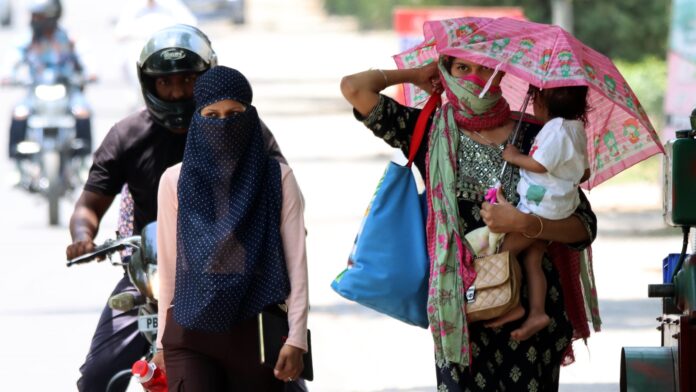October 25, 2024: Feeling hot and sweaty in October in Delhi? Are your Acs still running 24X7? Will this Diwali feel summery hot? These are uncomfortable questions that many are asking.
What is October Heat? October heat refers to the unusually high temperatures that grip many parts of India after the retreat of the southwest monsoon. During this period, skies are typically clear, but humidity levels remain high, creating a stifling and uncomfortable atmosphere. Cities like Delhi, Mumbai, and Kolkata often experience temperatures soaring between 35°C and 40°C, with little to no relief from rain.
Also Read: Live India Travel- London: Top 10 Must-See Attractions for Every Traveler-Watch
Nights offer minimal respite as warm air lingers, trapping heat within buildings and making it difficult for residents to cool down. The situation is often worsened by dry winds and occasional hot spells, leaving millions across the country feeling the effects of this oppressive heat. While October heat has historically been a regular occurrence, recent years have seen it grow more intense, a worrying trend linked to climate change.
October Heat and Climate Change India’s October heat is no longer just an annual inconvenience; it is increasingly seen as a symptom of the global climate crisis. Rising global temperatures have led to more frequent and intense heatwaves, and India’s geographical and demographic conditions make it particularly vulnerable.
The increase in atmospheric greenhouse gases has resulted in higher temperatures, prolonged heatwaves, and more extreme weather patterns. In cities like Delhi, where air pollution is already a major issue, heatwaves exacerbate environmental stress, making it harder to breathe and increasing health risks for vulnerable populations. Climate models predict that as global temperatures continue to rise, India’s October heat will only worsen, pushing the limits of human endurance in tropical regions.
Impact on Public Health The combination of high temperatures and humidity during October heat poses serious health risks, particularly for vulnerable groups such as the elderly, children, and those with pre-existing conditions.
The most immediate health threats include heat exhaustion and heatstroke. Prolonged exposure to high temperatures, especially in urban settings where the urban heat island effect traps heat, can cause dehydration, fatigue, dizziness, and confusion. Severe cases can escalate to heatstroke, a potentially fatal condition where the body’s core temperature exceeds 40°C.
“During this changing weather, there is a rise in temperature and humidity, causing uncomfortable, suffocating surroundings. This can be risky to our health, disrupting the immune system and creating conditions favorable for the spread of certain viral and bacterial infections,” said Dr. Pooja Khosla, Co-Chairperson, Department Of Medicine, Sir Ganga Ram Hospital.
Dehydration and Respiratory Problems The risk of dehydration is particularly high for outdoor workers, such as farmers, construction workers, and street vendors who have limited access to shaded or cool areas. Without adequate water intake, excessive sweating can lead to kidney stress and, in severe cases, kidney stones or acute kidney injury.
October heat also tends to worsen respiratory problems. In urban areas, the combination of heat and air pollution forms a toxic mix of pollutants. Ground-level ozone, produced when pollutants react under high temperatures, can trigger asthma attacks and exacerbate chronic bronchitis. “Pollutants in the air can trigger or worsen conditions like asthma, bronchitis, and other chronic respiratory diseases,” explained Dr. Tushar Tayal, Consultant, Internal Medicine, CK Birla Hospital.
Psychological Effects of October Heat The physical discomfort from prolonged heat exposure can have psychological impacts as well. Studies suggest that living in consistently high temperatures can lead to increased levels of stress, irritability, and fatigue. Poor sleep quality, caused by oppressive heat, further affects mental well-being, particularly in densely populated urban areas where people may live in cramped homes without adequate ventilation or cooling.
The combination of high heat, humidity, and poor air quality can make people more susceptible to infections. “Hot and humid conditions are conducive to the growth and spread of pathogens, including viruses and bacteria. Waterborne diseases like typhoid and viral infections, such as the flu, may become more common during this period,” Dr. Tayal added.
As India grapples with the annual October heat, it’s evident that climate change is amplifying its effects, posing a growing threat to public health and well-being. Addressing these challenges will require concerted efforts to mitigate climate impacts and develop better infrastructure to help people cope with extreme weather.



